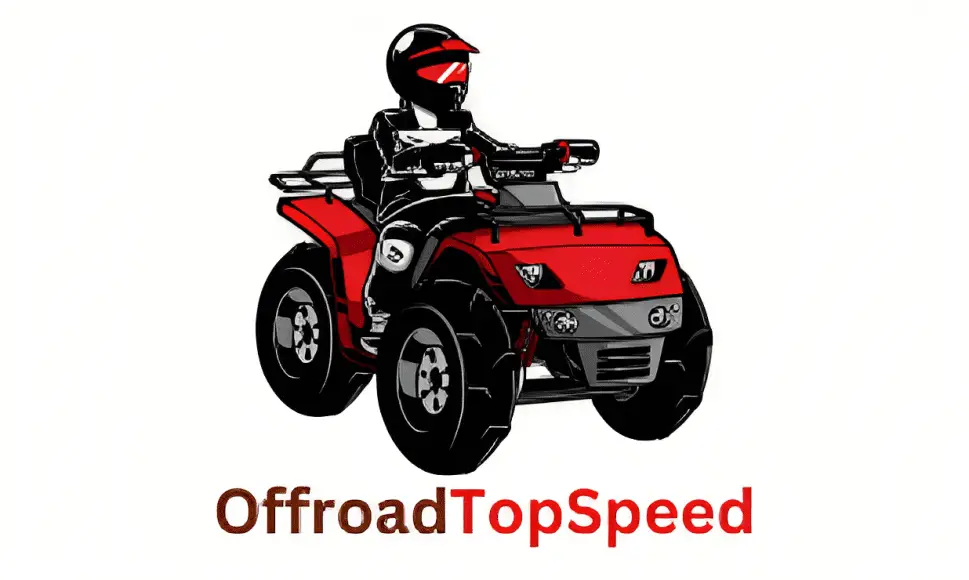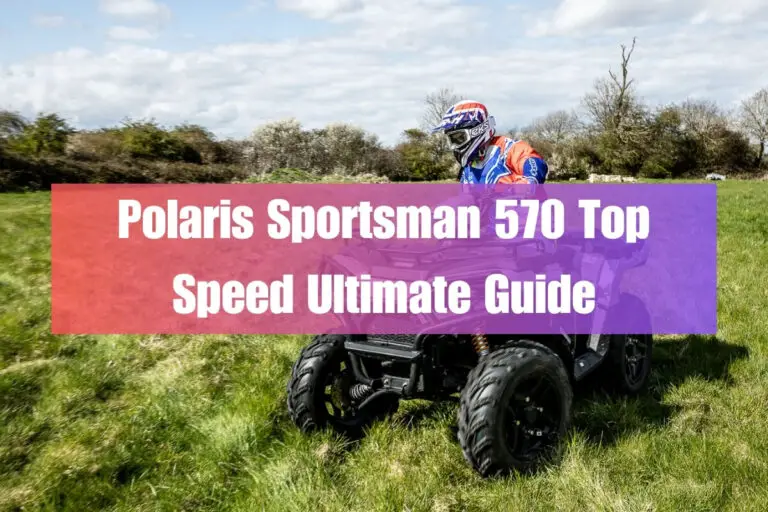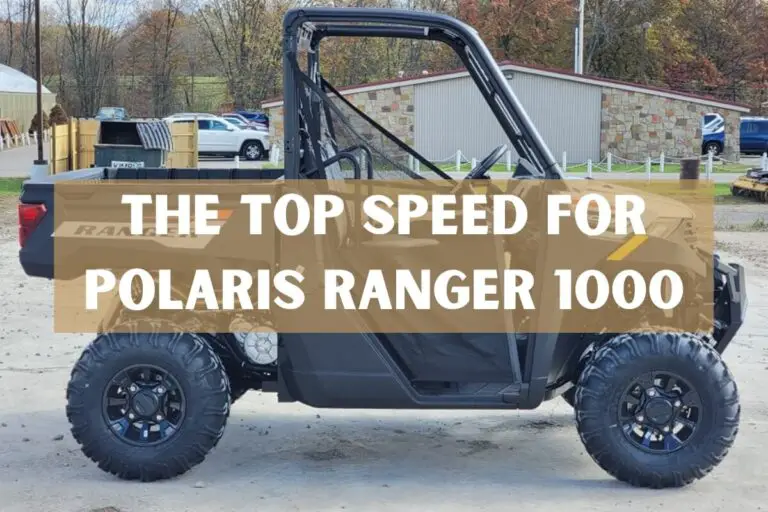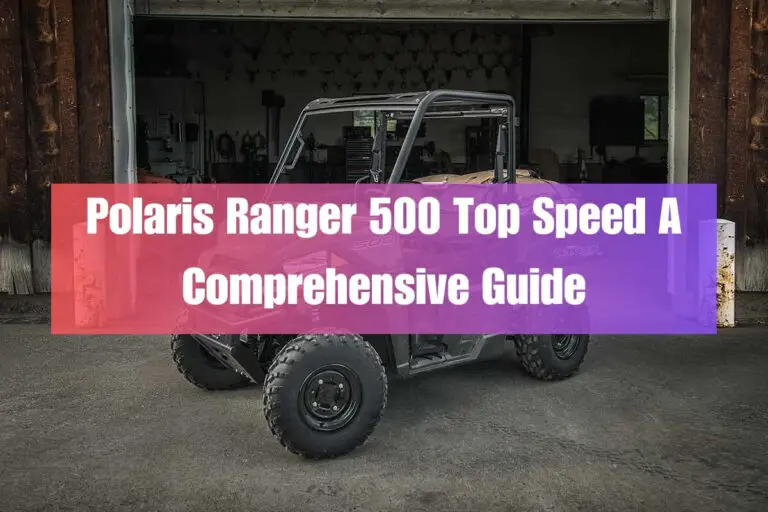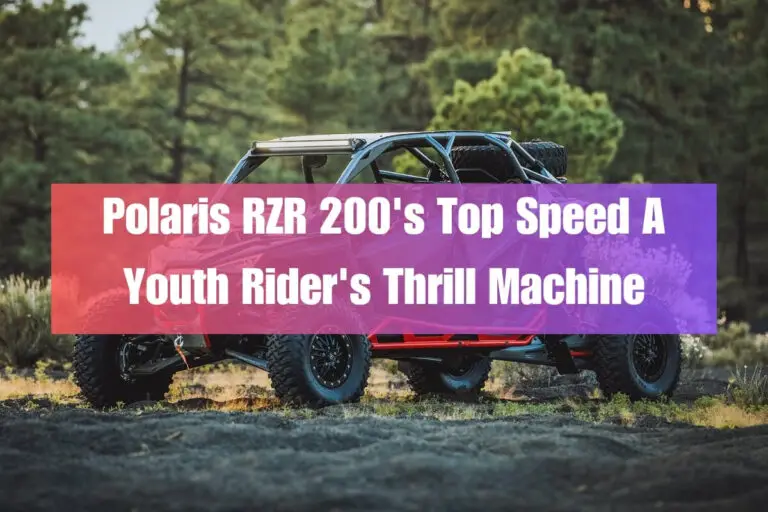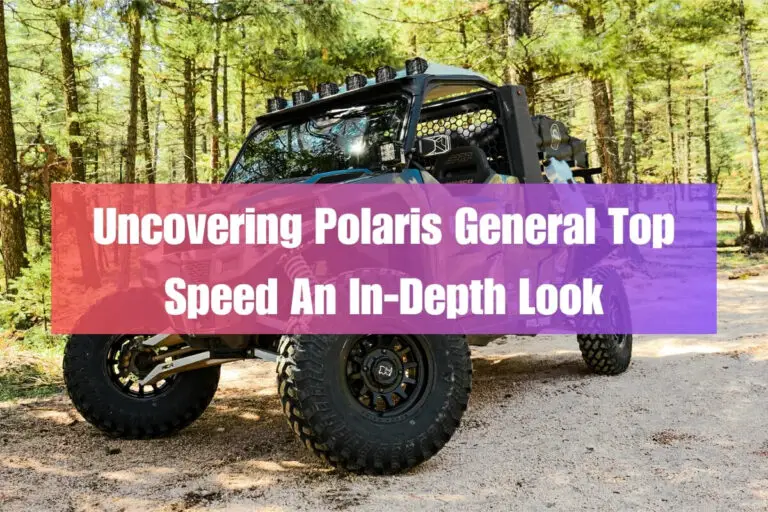Polaris Predator 500 Top Speed: Tested + Owner insights
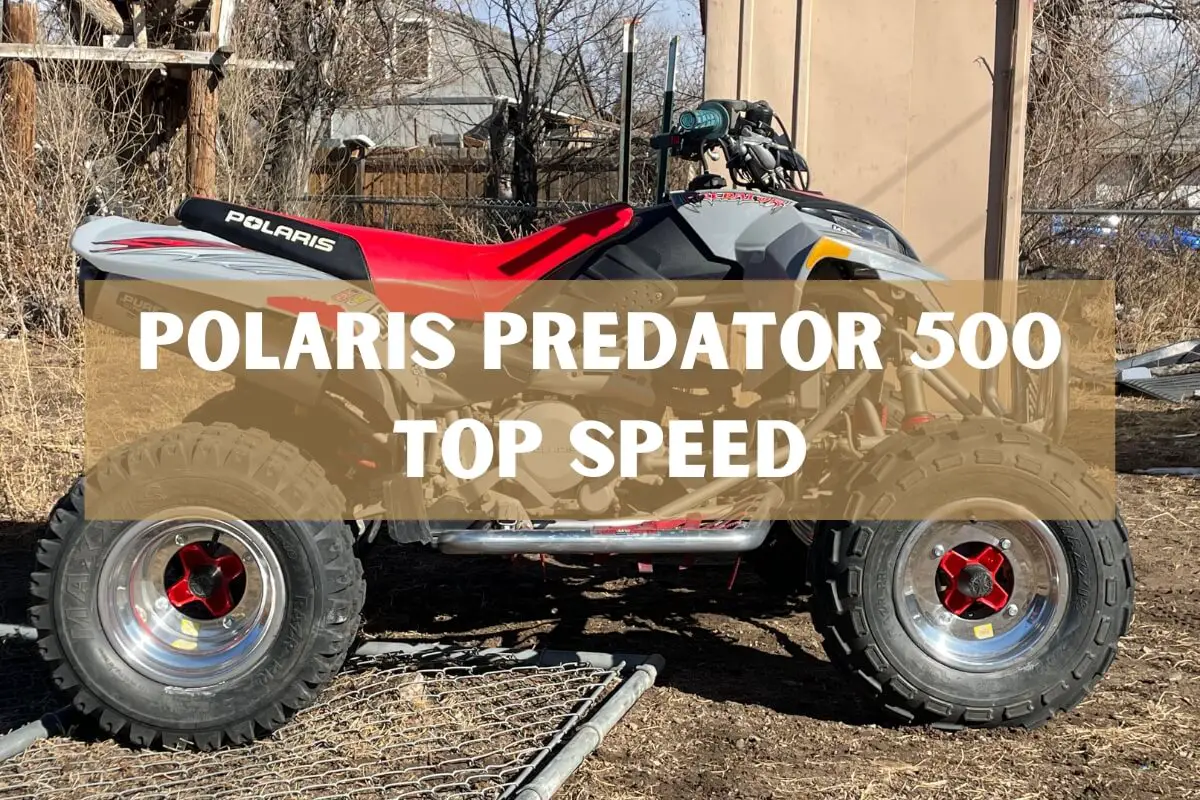
The Polaris Predator 500 is regarded as one of the fastest sport ATVs from the mid-2000s, with a top speed of 73 mph from the factory. But many riders hunger for even more extreme acceleration and max velocity from this capable quad.
Can you push a Predator 500 beyond its stock limits? What is the best way to extract more horsepower and torque for higher speeds? Does gearing, weight, tires, or suspension modifications make the biggest difference?
The answer is yes, a hopped-up Polaris Predator 500 can reach over 85 mph when properly optimized for top speed. The keys are smart engine breathing mods, gearing changes to favor velocity over torque, and suspension tweaks to maximize stability.
This in-depth guide covers all the ways to safely transform your Polaris predator 500 from quick to insanely fast. We’ll analyze:
- Factory spec and speed capabilities
- Best power upgrades
- Gearing and tires for velocity
- Chassis and suspension considerations
- Rider technique and weight impact
- Pros and cons of speed focus
- Polaris Predator 500 top alternatives
And more! Let’s get into the nitty gritty details…
Overview and Factory Specs
First, a quick refresher. The predator 500 was released by Polaris in 2003 as a high-performance sport ATV. It was manufactured from 2003 until 2007 over five model years.
Several variants were produced including the Troy Lee Designs edition with custom graphics. At its debut, the Predator 500 won the ATV of the Year award and was praised for its speed.
Here are the key factory specs for acceleration and max velocity capabilities:
| Spec | Measurement |
|---|---|
| Engine | 4-stroke DOHC 499cc |
| Horsepower | 41 hp |
| Torque | N/A |
| Transmission | 5-speed manual |
| Front Suspension | Dual A-arm adjustable shocks |
| Rear Suspension | Non-link swing-arm |
| Brakes | Hydraulic disc |
| Top Speed | 73 mph |
| 0-30 mph | 1.8 seconds |
| Fuel Tank Capacity | 3.25 gal. (12.3 liters) |
| Dry Weight | 415 lb. (188.24 kg) |
| Carb | Mikuni 42mm BSR |
| Cooling Type | Liquid |
| Starter | Electric |
| Final Drive | 520 O-ring chain |
| Oil Type | 10w40 |
With 41 horsepower moving just 415 pounds, the Predator 500 delivers a thrilling power-to-weight ratio for intense acceleration.
The advertised top speed from Polaris is 73 mph. But many owners report breaking 80 mph or more on open trails. How is this possible? Let’s analyze the factors that influence velocity next.
What Determines the Top Speed?
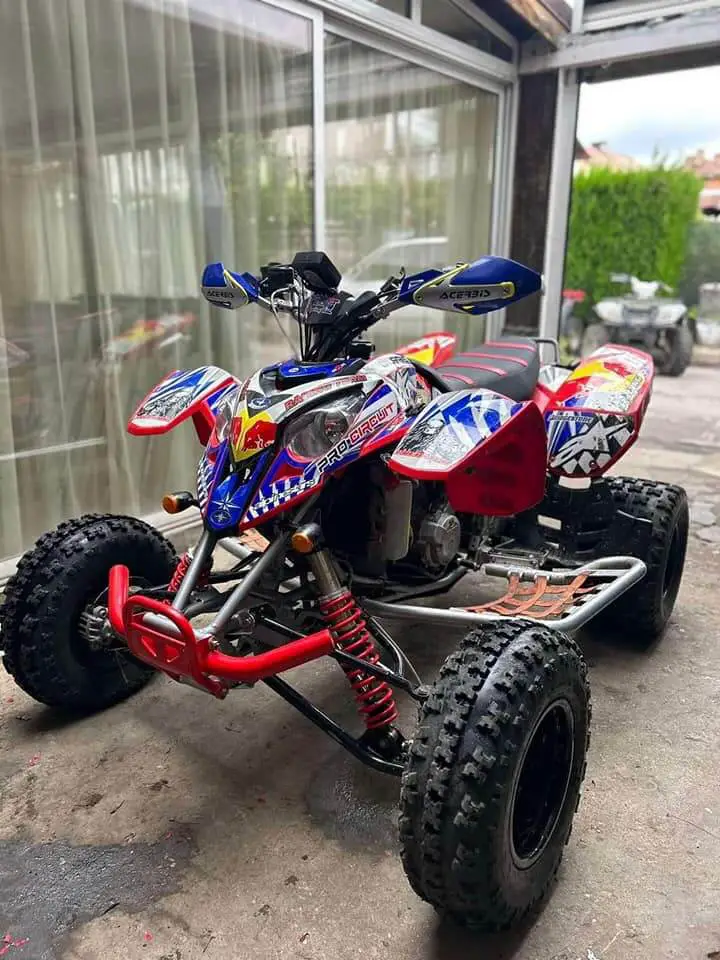
The maximum speed any ATV like the Polaris predator 500 can reach depends on these key factors:
- Engine power – Horsepower & torque
- Gearing – Sprocket sizes and transmission gear ratios
- Tire size – Diameter and tread design
- Weight – Curb and riding weight
- Suspension setup – Flex and dampening
- Rider technique – Aerodynamics and operation
Horsepower is the biggest variable determining velocity. More ponies equals higher potential speeds. Torque influences acceleration rate – how quickly max velocity is achieved.
But the transmission gear ratios also play a major role in converting engine output into either rpm or wheel speed. And tire diameter sets the actual distance covered with each wheel revolution.
To hit over 80 mph, most Predator 500 owners focus on mods to enhance breathing and fuel delivery for more power. Changing sprockets and gear ratios allows that extra grunt to produce more speed.
Polaris Predator 500 Top Speeds by Model Year
| Model Year | Top Speed |
|---|---|
| 2003 | 73 mph (claimed) |
| 2004 | 73 mph (claimed) |
| 2005 | 73 mph (claimed) |
| 2006 | 73 mph (claimed) |
| 2007 | 73 mph (claimed) |
The advertised top speed is 73 mph for all model years of the Polaris Predator 500. However, as discussed in the article, owners have reported exceeding 80 mph on modified Predator 500s.
Let’s break down the powerplant and drivetrain pieces next.
Getting More Power from the Engine
Even in stock form, 41 horsepower propels the nimble Predator 500 to thrilling speeds. But it’s common for owners to crave even more power.
The 499cc engine is pretty efficient out of the box. But some key mods can take it to the next level:
- Air Intake – Aftermarket filter kits increase airflow
- Exhaust System – Improved header and muffler
- Fuel Optimizer – Carb jet kits or fuel programmers
- Lightweight Components – Shave lbs with carbon fiber or titanium
Opening up the airbox with a high-flow intake kit allows the single-cylinder motor to swallow more oxygen for combustion. Adding a full exhaust system with performance header and muffler boosts scavenging for less restrictive outflow.
Retuning carburetors or installing a fuel programmer optimize the air/fuel mixture. So you get every ounce of power from the increased airflow without running lean.
All together an intake, exhaust, and fuel tuner can add 4-8 peak horsepower. Some dyno tested Predator 500s now put down over 50 hp to the rear wheels!
Gearing and Tires Are Key for Speed
The next area to modify is gear ratios and tire size combo to favor a speed focus over acceleration or towing utility.
The Predator 500 uses effective automatic transmission geared for quick 0-30 mph bursts and decent top end.
But switching sprockets to gear the chain final drive can provide higher velocity by trading some low end grunt. Choosing road focused tires 26+ inches tall further takes advantage of those rpm.
Here are good gearing and wheel upgrades for speed:
- Smaller front sprocket
- Larger rear sprocket
- Road tire with 8-10% over stock diameter
For example, dropping 2 teeth on the front and adding 2 teeth to the rear sprocket effectively shifts to “taller” gearing overall. Then fitting 26 or 27 inch tires compared to the stock 25 inch further leverages those extra revs per mile.
Many owners report breaking the 80 mph mark with these affordable drivetrain tweaks alone!
Chassis and Suspension Setup
To translate that 80+ hp to stable speed, the Predator’s chassis and suspension also need some tweaks:
- Increase preload for stiffer response
- Soften compression dampening
- Stabilizer bars reduce body roll
- Lower tire pressures enhance grip
The stock suspension is set compliant for absorbing trail bumps at sane speeds.
Cranking up preload makes the shocks stiffer to prevent bottoming out landing jumps at speed. Backing off compression dampening allows more control absorbing rapid impacts.
Adding stabilizer bars front and rear reduces chassis roll leaning into turns – so you can rail berms with confidence. Running lower tire pressure around 5 psi enhances contact patch traction.
With these tweaks the Predator 500 suspension stays composed at extreme velocities – inspiring confidence pushing the speed envelope.
Maintenance Musts for High-Performance Riding
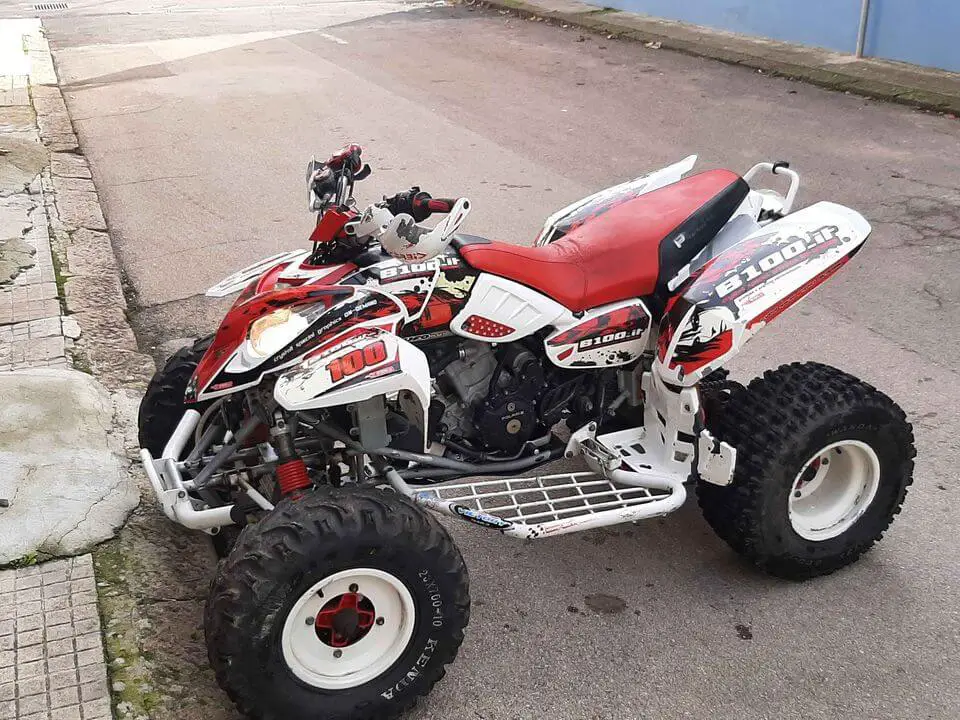
When running any machine at its performance limits, staying on top of maintenance is crucial. Here are key areas to focus on with a speed-tuned predator 500:
- Air filter – Clean regularly to avoid power loss
- Spark plug – Replace yearly with correct heat range plug
- Engine oil – Use synthetic for durability. Change twice as often as stock interval
- Coolant – Flush system yearly. Use high quality coolant/water wetter
- Throttle body – Clean carbon buildup to maintain top power
Pay special attention to the air filter. Running lean risks burnt valves or piston damage. So inspect and clean the filter frequently.
The other vital fluid is engine oil. Always run high quality synthetic oil. And reduce change interval to 25 hours when riding hard frequently. This keeps bearings, rings and friction surfaces happily lubricated.
Following rigorous maintenance transforms the Predator 500 engine into a durability marvel that chews up the miles without complaint.
Gear Up with Protection for Safety
Pushing 80+ mph speeds off-road demands taking safety precautions:
- Helmet – Protect your noggin with DOT or Snell rated full face
- Goggles – Seal out debris that love to blind at speed
- Gloves – Save your paws from fatigue and injury
- Jersey & pants – Durable material with armor cocoons torso
- Boots – Over the ankle to brace ankles and shins
- Neck brace – Reduce whiplash and collarbone breaks
A helmet is obvious to protect your head – look for high-end models with features like MIPS anti-concussion. Bomber goggles seal out dust that quickly turns fun blur into crash blindness.
Full moto jersey and pants use tough material with body armor that could sacrifice itself so you don’t break ribs meeting the ground. Reinforced mid boots stabilize ankles and shins from tangling in the foot pegs.
And a Leatt neck brace can save you from a life-changing spinal or collar bone injury. AT 80 mph things can go sideways fast, so respect physics with protection!
Rider Technique Matters Too!
To safely navigate extreme velocities off road, the nut holding the handlebars matters as much as machine setup!
Here are riding techniques that help you go faster safely on the Predator 500:
- Relax upper body to absorb terrain
- Light grip, steer with core and knees
- Stay centered balanced on foot pegs
- Scan terrain ahead as you ride
- Pick smooth lines, avoid big obstacles
- Practice braking bumps and whoops at speed
- Learn to powerslide turns
Staying loose with bent knees and elbows allows you to flow with the quad over rough terrain. Strange as it sounds, learning to charge into braking bumps and whoops keeps the chassis balanced instead of bucking.
Constantly scanning for smooth paths allows you to spot terrain trouble early and adjust lines. Setting up wide for turns then power sliding once the chassis is settled carves effortlessly.
Mastering advanced control skills equates to smile factor times faster riding!
Weighing the Pros and Cons of Speed
Transforming your Predator 500 into an 80+ mph monster machine looks dang tempting on paper! But it’s smart to consider the up and downsides of that quest:
Pros
- Pure thrill of extreme velocity!
- Bragging rights of scary fast machine
- Advanced riding skills development
Cons
- Increased safety risk at speed
- More wear on components from stress
- Easy to out-ride your abilities
- Machine optimization can get expensive
There’s no replacing the sheer visceral thrill of hitting insane speeds off-road! It’s a captivating process to methodically build machine capability too. And ultimately you develop incredible control skills.
However, tempting fate at 80 mph leaves little room for error if things go pear shaped.components wear faster riding at their limit constantly too. And it’s seductively easy to ride over your head into danger. Not to mention spending dollars instead of just twisting throttles!
Ultimately only you can decide if the quest for lludacris speed is worthwhile.
Just be honest with your riding abilities, budget constraints, and risk tolerance shaping expectations. Then make smart calculated decisions optimizing gear, technique, and training to reach velocity milestones safely.
The Predator 500 may no longer be cutting edge. But tuned up properly, it still delivers one of most intense blasts across dirt available!
Hopefully this guide gave you tons of great ideas getting the most from your Predator. Next let’s compare its capabilities to some other wicked fast ATVs from sport to race machines.
How Does Predator 500 Speed Compare?
When stock against stock, the Polaris Predator 500 holds its own as a seriously swift sport quad contender even 15+ years after release.
Here’s how competitors of the era like the Suzuki Z400 and ongoing speed demons compare on power and top end:
| ATV Model | Engine Size | Horsepower | Top Speed |
|---|---|---|---|
| Polaris Predator 500 | 499cc | 41 hp | 73 mph** |
| Suzuki Z400 | 398cc | 33.4 hp | 70 mph |
| Yamaha YFZ450 | 449cc | 39 hp | 75 mph |
| Honda TRX450R | 449cc | 41 hp | 74 mph |
| Beta RR-S 500 Race | 478cc | 47 hp+ | 90 mph+* |
*Estimated/unofficial speed
**Factory claim but 80+ mph observed
The Suzuki LT-Z400 matches close at just under 3% less displacement and power. The YFZ450 and TRX450R pace the Predator thanks to more modern engine efficiency. But hopped up, the Predator can still run with the speed of these competitors.
Once you step up to pure race machines like the Beta RR-S 500 though, you’re playing in a whole different league! Shaving weight paired with 80+ horsepower allows it to double the speeds of the Predator.
So while the Predator 500 is certainly no longer the speed king, it still stacks up as a surprisingly capable velocity machine!
Owners Report: Positive and Negative Reviews
The Polaris Predator 500 has its fair share of fanatical owners. Most praise it’s surprising arm-stretching acceleration and high top speed for a mid-sized machine. Here are some owner perspectives from forum comments:
“Wow is this thing fast! My predator has full exhuast, air filter kit and 29 inch Silverbacks. Last radar run I hit 82 mph on gravel road. Hard to keep pinned but awesome power.”
“I bought my girlfriend a used Predator 500 as her first quad. It has plenty of speed to scare you silly. Gets squirrelly over 60 mph but she is fearless. So much fun blasting around the trails together!”
“Yeah the predator rips for desert riding. Good tunable power and nice suspension setup. We added radiator fan though because it will overheat in dunes if you don’t. Gearing change helped a lot too.”
But a few owners report challenges with reliability when ridden hard:
“I’ve had nothing but problems with my 2005 Predator 500. Engine studs kept backing out leaving it with no power. Rear axle bearings constantly fail too. Dealer support is worthless. Should have bought a Japanese quad…”
“Fun when running but the transmission is junk. Belt slipped leaving me stranded miles from truck. Battery barely holds a charge even new. Electrical system gremlins drive me nuts! Love the power but nickel and dime repairs are adding up.”
So while most riders praise the Predator 500 performance as a bargain used buy, you may encounter some mechanical gremlins down the road. Proper maintenance helps maximize longevity though.
5 Great Alternatives to Consider
While still impressive when optimized, the Predator 500’s age leaves it behind modern machines using more advanced technology. Here are five great alternatives combining speed with reliability:
- Yamaha YFZ450R – Race ready 449cc rocket with fuel injection
- Suzuki LT-Z400 – Legendary 398cc sport quad still speedy
- Honda TRX450R – Bulletproof 449cc engine pushes 85+ mph
- Can-Am DS450 – 449.3cc single-cylinder, two-stroke engine
- Kawasaki KFX450R – Featherweight rocket bike handling
The Yamaha YFZ450R combines a nimble chassis with the most powerful sport ATV engine around to devour any terrain at warp speed. It’s fuel injection transforms the power delivery too.
The Suzuki LTZ400 helped birth the sport quad segment alongside the Predator 500 way back when. And it still rips with a bulletproof 400cc mill.
The Honda TRX450R and Can-Am DS450 offer technology like traction control to help apply their horsepower. And the featherweight KFX450R handles like a dirt bike with its plated racing pedigree.
Any of these modern machines outpace the Predator 500’s acceleration and handling dynamics to continue raising the bar of ATV performance.
Frequently Asked Questions
What is the top speed of the Polaris Predator 500?
The advertised top speed from Polaris is 73 mph. However, owners have reported exceeding 80 mph with modifications.
What years was the Polaris Predator 500 manufactured?
The Predator 500 was produced from 2003 to 2007 over five model years. Special editions like the Troy Lee Designs graphics version were also released.
How much horsepower does a stock Predator 500 have?
The stock Predator 500 engine produces 41 horsepower at the crank from its 499cc single cylinder displaced. Hopped up models can achieve over 50 hp.
What types of modifications boost top speed?
Common mods for more top speed include:
- Engine work like air intakes and exhaust
- Gearing changes to favor velocity
- Larger diameter wheels and tires
Is the Predator 500 engine reliable?
When properly maintained, the 499cc engine can be durable. But some owners report issues like:
- Overheating when worked hard
- Electrical gremlins in charging and ignition
- Transmission belt slippage under heavy loads
How much does a used Predator 500 cost?
Used prices vary widely by condition, miles, and mods. Expect to pay $1600 US to $2800 US for a used example in good shape.
Conclusion: Still Scary Fast When Optimized
The Polaris Predator 500 may have faded from dealerships after a short 5 year reign. But fanatical owners continue wringing every ounce of speed from this capable quad to terrorize trails.
While once state of the art in its era, ongoing innovation leaves it behind modern 450 sport quads. But that doesn’t diminish FROM an optimized Predator’s ability to deliver Face melting velocity!
With smart engine breathing mods, gearing, and suspension tweaks an 80+ mph Predator remains a blur buzzing by! And learning to safely control that speed makes you an incredibly capable rider able to tame just about any machine.
So embrace the joy of velocity if you’re lucky enough to snag one of these vanishing two stroke icons. Treat it well and the beloved Predator 500 continues to churn out grin inducing speed for years to come!
Hopefully you enjoyed this breakdown on optimizing your Predator 500’s top speed. Any questions on mods or performance tips? Let me know below! Ride safe and keep the throttles pinned.
